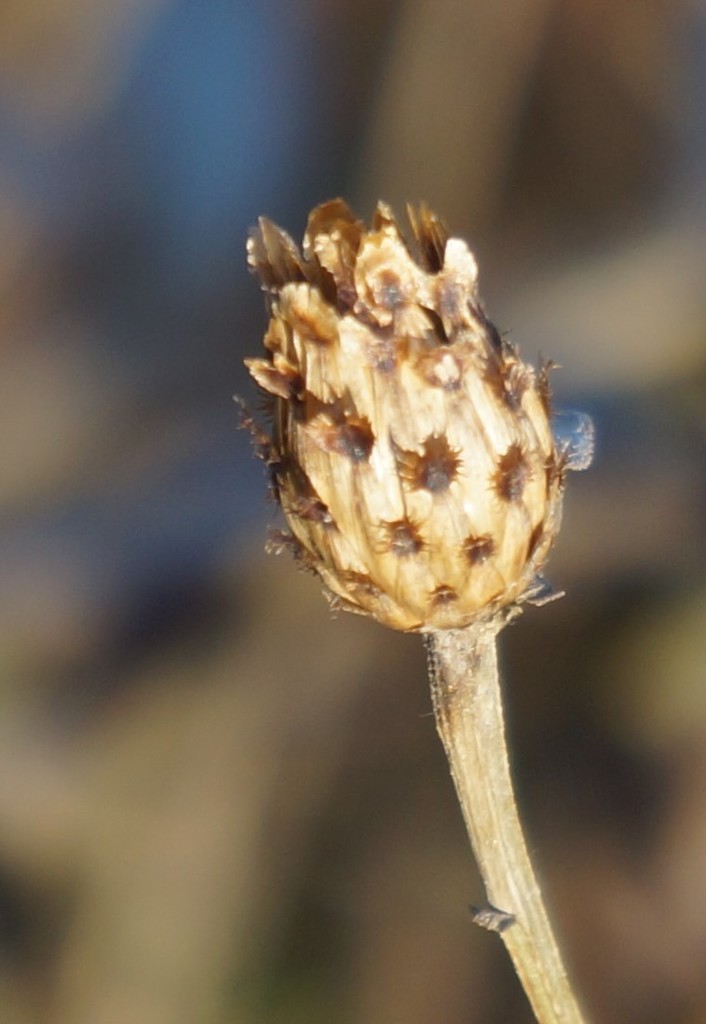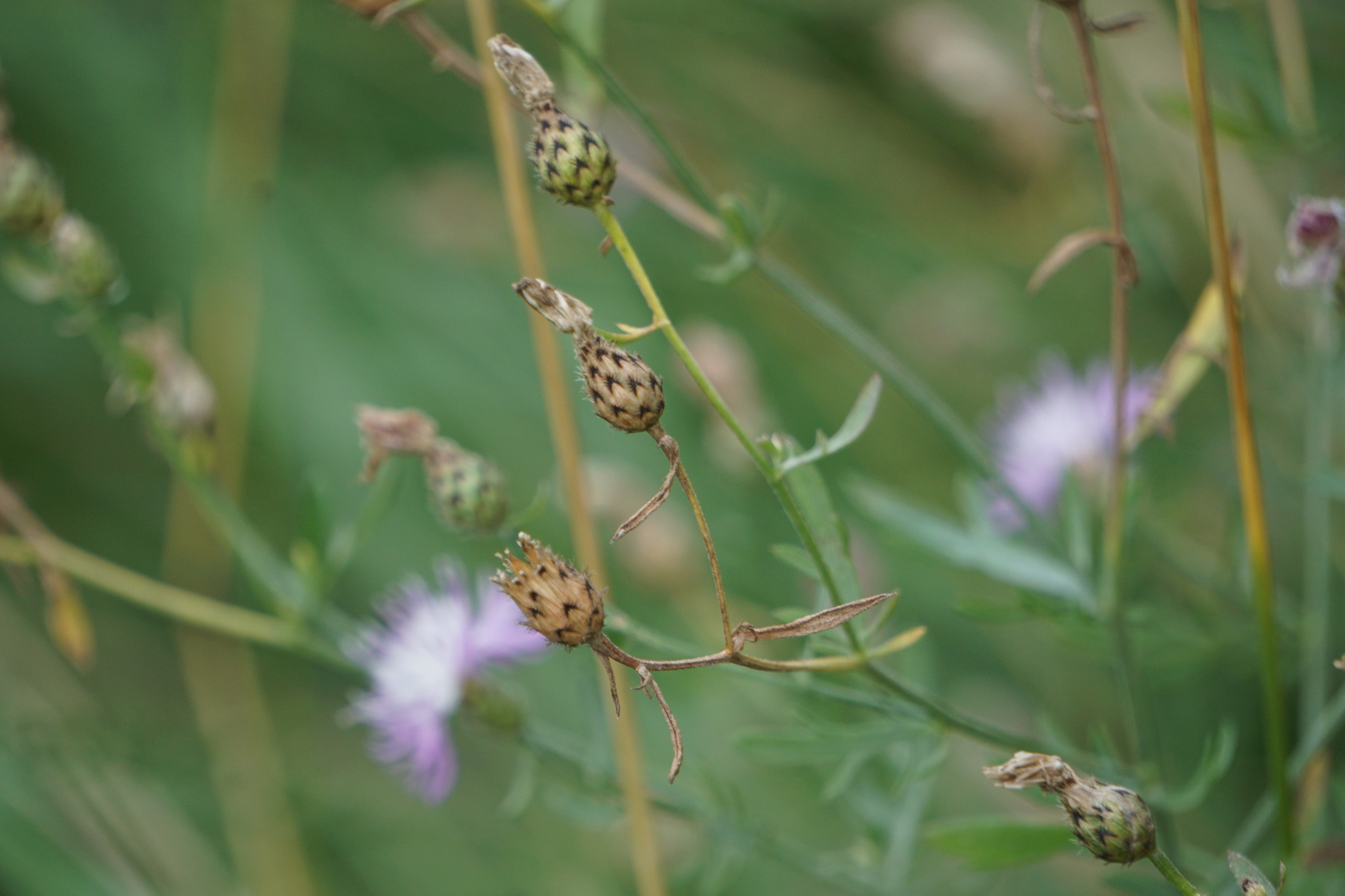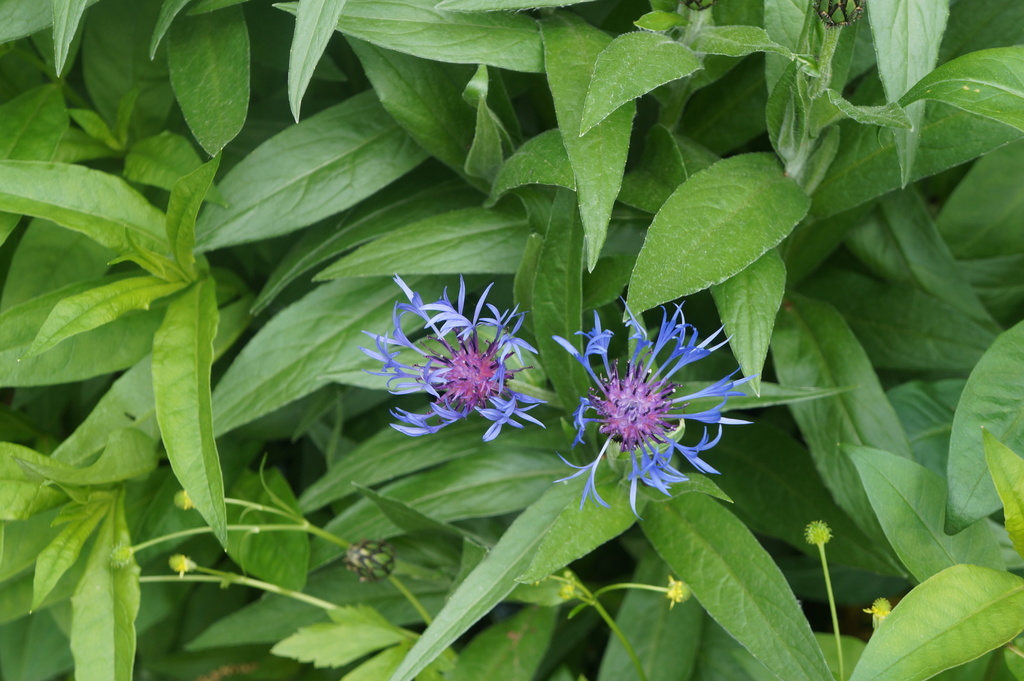This guide is NOT for the Pine Barrens or "down the shore"; there are many species there that are left out here.
Also, make sure you are not dealing with planted "asters", there are tons more of those as well.
In central and northern NJ there are five genera with "aster" like flowers:
Symphyotrichum (the American asters)
Erigeron (the fleabanes)
Eurybia (the wood asters)
Doellingera (the flat-topped asters)
Oclemena (whorled wood aster)
Fleabanes (Erigeron sp.) are the only of the "aster-like" flowers that bloom before August. They have over 50 white or purple rays that are narrower than asters', almost hair-like. They have yellow disc flowers where it is essentially impossible to see individual flowers, they look like a yellow "button". Some will still be raggedly blooming in fall. They have very long, narrow, mostly leafless stems.
-Philadelphia fleabane (E. philadelphicus): clasping leaves
-Annual fleabane (E. annuus): stems with hair that sticks straight out
-Daisy fleabane (E. strigosus): stems with appressed hair
-Robin's plantain (E. pulchellus): usually basal leaves, longer rays, usually purple, less common
(note that horseweed (E. canadensis) is also in this genus but looks nothing like an aster)
Flat-topped aster (Doellingera umbellata) is not common in NJ. As its name implies, its flowers are in very flat clusters at the top of a very straight plant. It can have several separate clusters or only the one. The rays are white and there are 7-14 (so, not many) rays per flowerhead. The leaves are very uniform, long oval, tapered at both ends, about 2 inches (or a bit less) long. The stems are zig-zag-y and usually reddish-brown.
-Cornel-leaved whitetop (D. infirma) is also recorded from northern NJ but is very rare. It has taller flowerheads (the green bracts below are taller)
Whorled wood aster (Oclemena acuminata) has large, oval (or long oval) leaves that look whorled if you look down on the flower from above, and very few flowers with long skinny white rays. It is not common and mostly found in north Jersey woods.
Wood asters: (Eurybia sp.) have heart-shaped leaves always present on the lower part of the plant and rays generally over 1/2 inch long. They can be white (common) or purplish (rare). The leaves never have winged stems, they are always corsely toothed. The flowers never have more than 20 rays. The flowers are in losely flat-topped clusters (but the leaves are totally different from flat-topped aster) Note that two American asters (Symphyotrichum sp.) also have heart-shaped leaves always present (S. cordifolium and S. lowrieanum), but both have purplish rays under 1/2 inch.
-White wood aster (E. divericata): common. 5-10 white rays. 5-15 teeth on each side of leaf. V-shaped leaf notches. No glandular hairs on leaves.
-Large-leaved wood aster (E. macrophyla): not common. 8-20 purple-tinged rays. Glandular hairs all over leaves.
-Schreiber's wood aster (E. schreiberi): uncommon (but should be present): 6-12 white rays. 15-30 teeth on each side of leaf. Squared off leaf notches. No glandular hairs on leaves. The phyllary (green part below flowerhead) is very tall and narrow.
American Asters (Symphyotrichum sp. ) are the toughest ones.
First off, the easy one:
-New England Aster (S. novae-angliae): Big flowerheads. Over 50 rays. Usually dark purple, can be white or pink. Stem very hairy, leaves clearly clasp the stem. Generally any non-planted large aster with over 50 rays in northern NJ is this species.
Note that there are several rarer species of aster with large flowerheads (1 inch across, roughly) and purple flowers that I am not covering in this guide. None have over 50 rays.
The ones with heart-shaped leaves always present:
-Common blue aster (S. cordifolium): unwinged leaf stalk, heart shaped lower leaves, under 20 short, purple-ish rays.
-Lowrie's aster (S. lowrieanum): winged leaf stalk, heart-shaped lower leaves, under 20 short, purple-ish rays.
If you find one with large-ish, non-linear, leaves present and no heart shaped leaves at the base of the plant, leaves have teeth, flowers small, few white rays it is probably Calico aster (S. lateriflorum)
Finally, the beastly ones. All often drop their main leaves, all have small white flowers, all at least sometimes have small linear leaves by the flowers. For all of these see my separate entry just on small white asters.
-Panicled (or common white) aster (S. lanceolatum)
-Calico aster (S. lateriflorum)
-Frost (or hairy white oldfield) aster (S. pilosum)
-Small white aster (S. racemosum)
-Heath aster (S. ericoides) should be west of here but may be present
And a very uncommon, but possibly present species that looks like these but with small blue/purple flowers is probably bushy aster (Symphyotrichum dumosum).
Another aster-like species is Ionactis linarifolia, like a smallish purple aster with short straight grass-like leaves and no branching.




























































